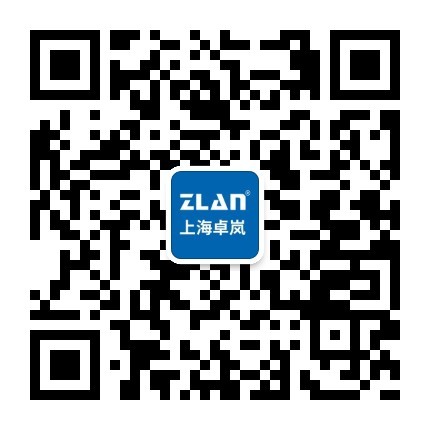- +86 13512168749
- oversea@zlmcu.com
- Buy Online


Products

 Single Serial Device Server
Single Serial Device Server

 Multi Serial Device Server
Multi Serial Device Server

 IoT Chip
IoT Chip

 P2P Networking Products
P2P Networking Products

 Serial Port Ethernet Core Module
Serial Port Ethernet Core Module

 Serial Port Ethernet Module
Serial Port Ethernet Module

 WIFI Products
WIFI Products

 2G/3G/4G Products
2G/3G/4G Products

 Zigbee/RF Products
Zigbee/RF Products

 Optical Fiber Products
Optical Fiber Products

 Modbus Gataway
Modbus Gataway

 Remote IO Controller
Remote IO Controller

 Interface Converter
Interface Converter








The Internet of Things (IOT) is divided into the cloud, the transmission layer and the sensor layer. The IOT communication gateway (hereinafter referred to as the gateway) is a communication forwarding function that transfers the data from the sensor layer to the cloud. If the sensor and the gateway are two independent devices, RS485, RS232, 4-20mA analog quantity, digital quantity input, digital quantity output and other methods are generally used in the middle. Regardless of the interface mode, the gateway performs the function of converting the collected data into TCP/IP protocol data. In addition, in order to meet the current requirements of the Internet of Things, such gateways had better have the following features. Shanghai ZLAN ZLAN1043 gateway single chip has the following six features.

1. Support for registration package and heartbeat package. The so-called registration packet is the packet that sends the ID information of the device to the cloud when the TCP connection is established. It plays the role of enabling the cloud to identify the device. Heartbeat packets are the packets that are sent to the cloud during the communication process to keep the link open and let the cloud know that the device is online. The gateway design should include registry and heartbeat packages. Common registration packets take several forms :(1) a simple 6-byte MAC address is sent after the TCP connection is established. (2) Dozens of bytes of registration information are sent after the TCP connection. (3) Add 6 bytes of MAC address before each data transmission, which is usually adopted under UDP communication mode.
2. Support for autonomous collection and protocol analysis. In order to reduce the amount of computing in the cloud, there is an increasing trend to put the calculation and storage of data on the device side, that is, "edge computing". The ZLAN1043 chip has a "protocol conversion method" (patented) that (1) enables the cross-conversion of any device protocol, such as converting proprietary instrument protocols to Modbus protocols. (2) At the same time, it can replace the cloud to collect the instrument data. These functions can be implemented by writing a transformed description text without the need for custom development firmware. This enables the communication gateway to translate a large number of sensor device protocols to realize the docking with the cloud.
3. Support MQTT protocol. As a subscription publishing communication protocol, MQTT is very suitable for data interaction and storage between the cloud and devices, and has been widely used since it was proposed. With the development of the IOT, various platforms and communication protocols emerge one after another, and a standardized communication protocol is needed to integrate these devices and platforms. MQTT is a protocol adopted by many cloud servers, second only to Modbus protocol. It takes the form of a topic subscription that allows multiple devices to share the same information of interest. ZLAN's ZLAN1043 supports the direct conversion of serial data into MQTT protocol data.
4. Support to submit data in HTTP GET and POST. The traditional TCP/IP private protocol often requires a very close protocol cooperation between the device and the cloud, which requires tedious debugging. When the cloud adopts the Web server architecture, the device can effectively submit data through GET and POST instructions similar to the browser, thus making the protocol design of the server quite simple. The gateway can submit the collected data directly to the WEB server in the form of GET/POST variable values.
5. Support P2P (peer-to-peer) communication. P2P is a decentralized communication structure. Compared with the centralized data forwarding and data storage of cloud platform, P2P can support more device nodes. Because communication between each device does not have to be routed through the cloud. When P2P technology is applied in the gateway of the Internet of Things, it actually provides a "transparent transmission" protocol, which enables users to find the device anytime and anywhere through the device ID and conduct "transparent transmission" with the device. For example, after connecting PLC serial port to P2P serial port server (patent No. ZL.2014 10088010.5), it can read data and download programs from the device as local anytime and anywhere, and the local computer can communicate with the PLC host computer of the local computer through a virtual serial port. The virtual serial port and the P2P serial port server establish a P2P transparent transmission channel.
6. Security and encryption. Prevent unauthorized devices from connecting to the cloud, prevent devices from connecting to the counterfeit cloud and sending data, and prevent data monitoring. These data security issues are attracting more and more attention. This requires both device and cloud authentication and data encryption.
In short, the communication gateway in the IOT is not a simple "transparent transmission" serial port to TCP/IP device. All the above functions and features have been realized in the single chip of ZLAN1043 communication gateway, which can effectively improve the docking speed between the communication gateway and the cloud, standardize the protocol, and replace the cloud to realize edge computing.
